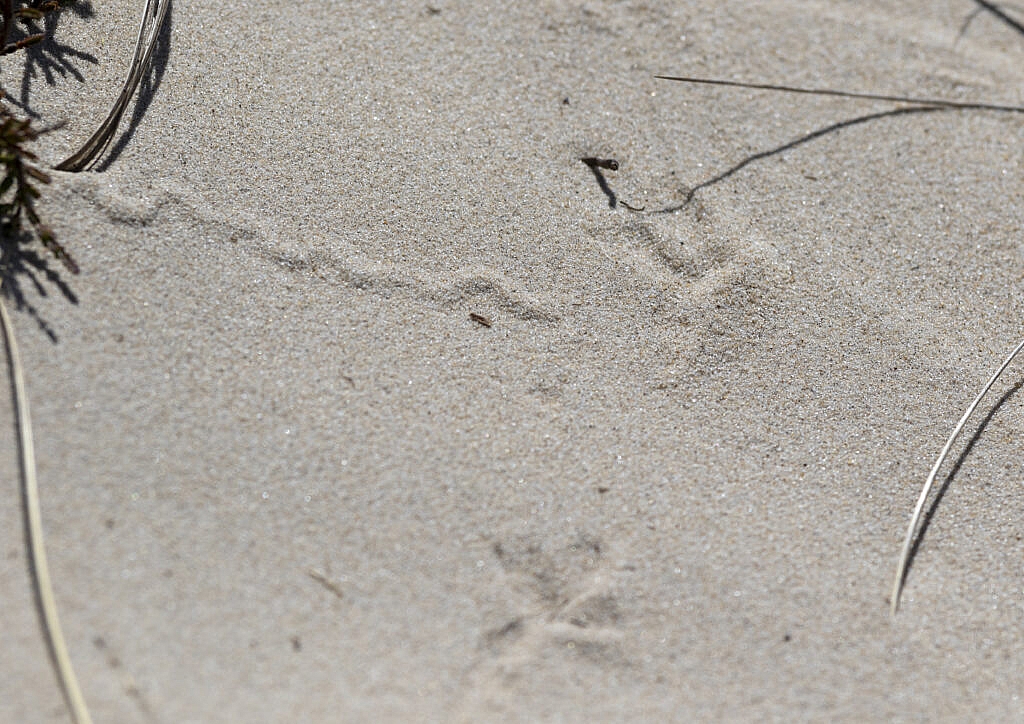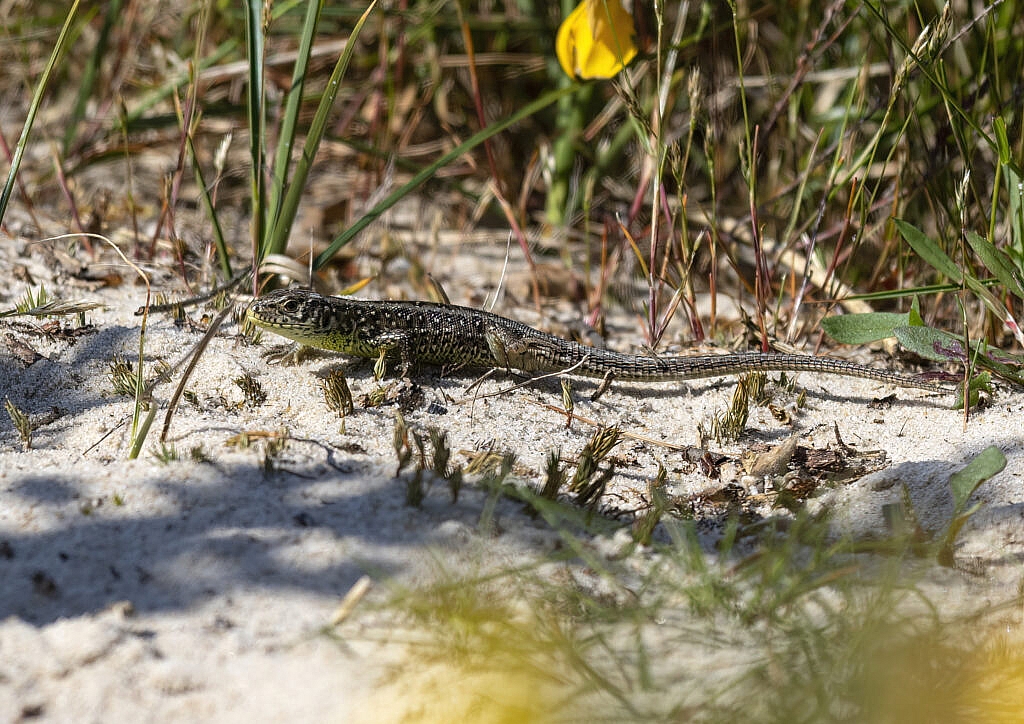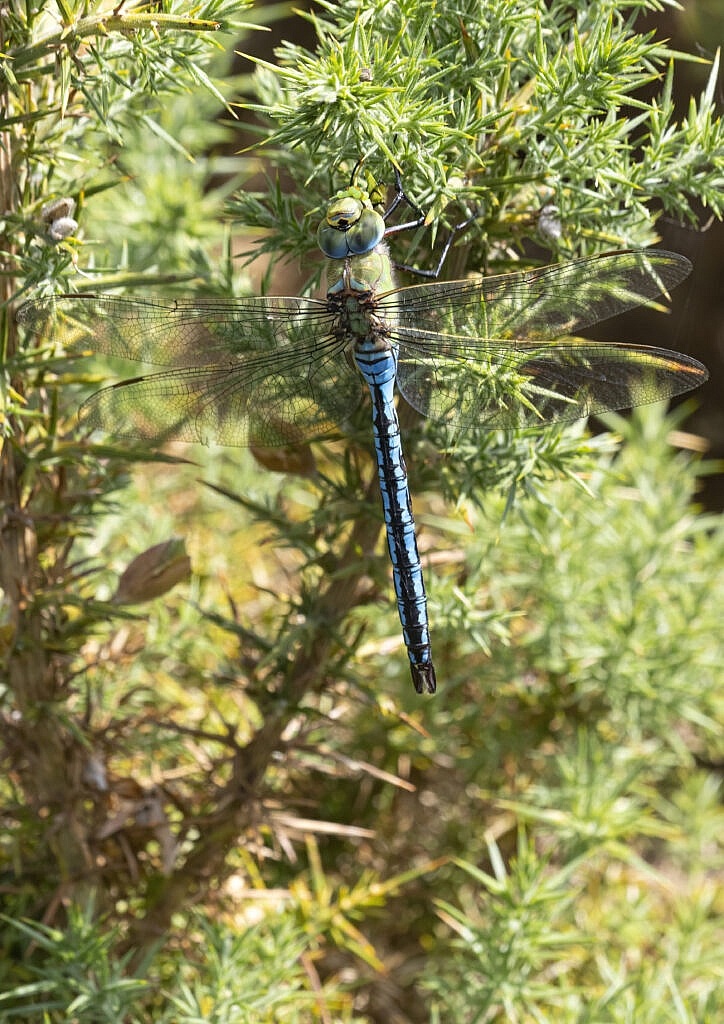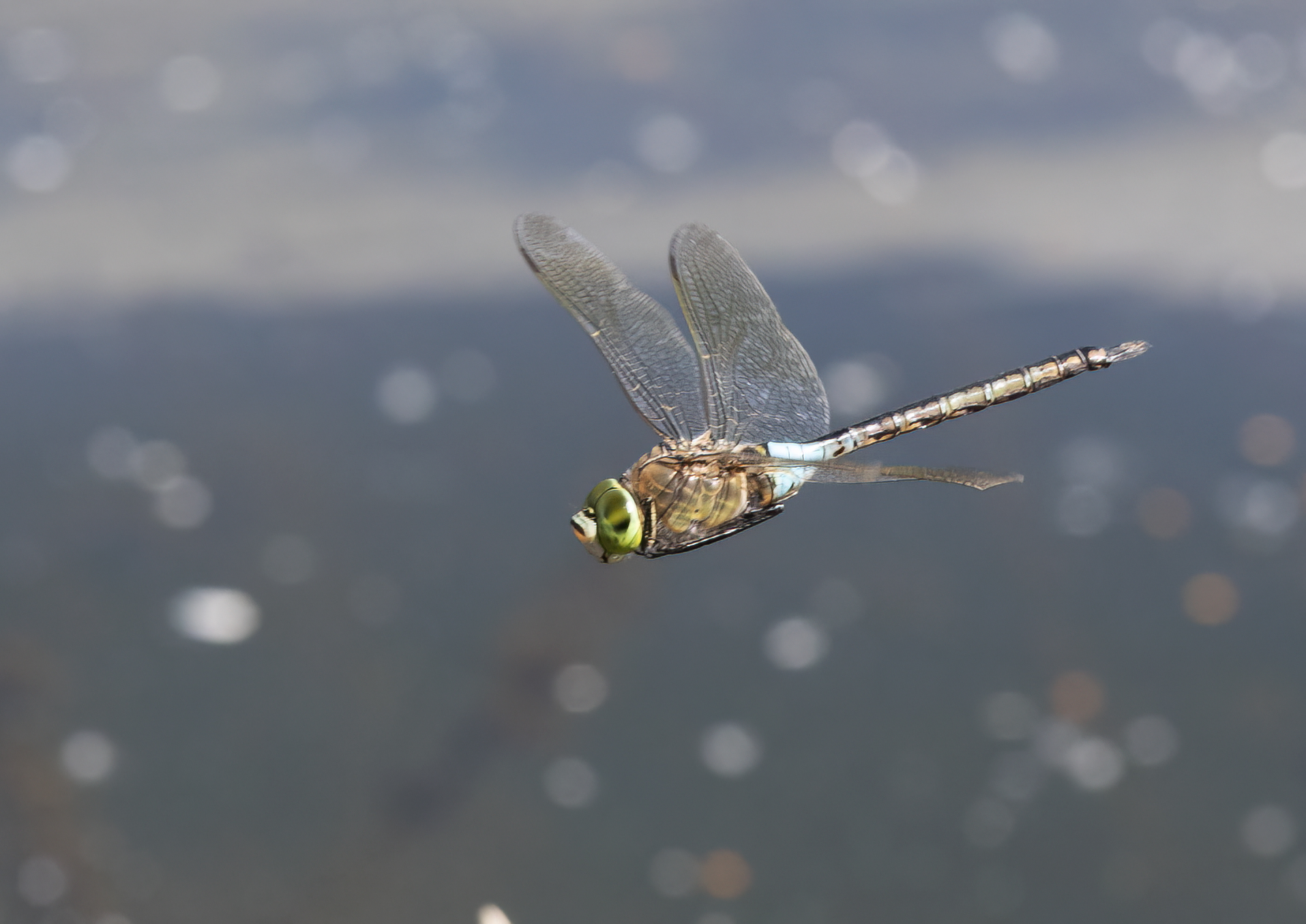#30 days wild is an initiative run by the wildlife trusts to get all of us, especially our children out into nature. Why not give it a go?
For Friday’s #30dayswild, I went to the seaside. It’s a good place to cool off on a really hot day, and a brilliant way to explore nature – searching rockpools for small crabs, and if you’re lucky, seeing some of those small, almost transparent, fish that hide amongst the waves as they break on the beach.
But the best thing I saw yesterday wasn’t on the beach, but on the scrubby dunes behind it. I saw this:

That’s the thing about nature. Sometimes you don’t see a bird or animal, but you can tell it was around by the signs it leaves behind. Here I was seeing a wiggly line, and either side of it the imprint of small feet with spread toes. These spread-toe marks are often made by small birds as they hop around. But the wiggly line told a different story. Something had dragged along the sand. Something that waggled. Something like a long tail, being dragged along behind something with clawed feet.
I didn’t see the thing that caused it, but I have before. It’s a lizard, like this one:

This is a sand lizard, and it’s one of Britain’s rarest animals. It’s about 10cm long. Sand lizards like to burrow into warm sand to make nests where they lay their eggs, which is why they like sand dunes. But I want you to take a close look, and this time imagine it’s bigger. A lot bigger. When you do, you realise that it’s just like one of the four-legged dinosaurs, the “Sauropods” that existed millions of years ago. They also used to like burying their eggs in warm sand. That’s why I like lizards: they really are just like miniature dinosaurs.
But the tracks of a sand lizard weren’t the only things from the age of the dinosaurs I saw. I also saw this, perched up on a gorse bush:

This is a dragonfly. It’s an “emperor”, and it’s Britain’s biggest, with a body that’s about 8cm long and a wingspan of about 10cm. It was munching something that it had caught in the air. Now dragonflies are amazing creatures. They are the deadliest predator on the planet. More of their hunts for food succeed than any other creature: far more than a great white shark, or a lion. But here’s the thing: dragonflies have also been around since the time of the dinosaurs. In fact, they were around before the dinosaurs were. The same basic body plan has existed for 250 million years or so. And if you think that’s impressive, think about this: the dragonflies we see today are also much smaller than they used to be. 250 million years ago they were about seven times the size they are now. Imagine going for a walk and seeing a dragonfly the size of a seagull coming towards you. Oh- and they have teeth, as well. Imagine a dragonfly the size of a seagull with teeth! How cool is that?
So next time you go to the seaside, as well as having a paddle or a swim and looking in the rockpools, why not take a look behind you as well, in the dunes and grass? You might be amazed at what you can find.






Social Profiles